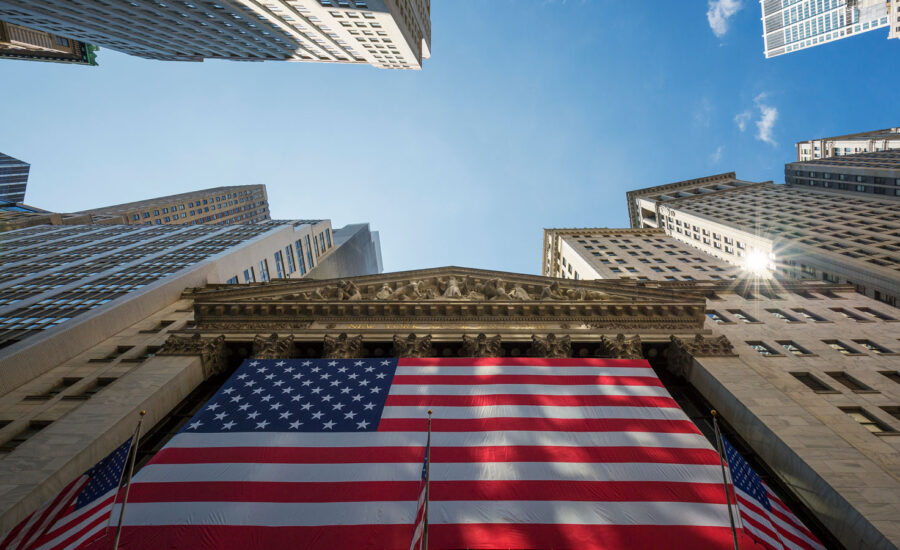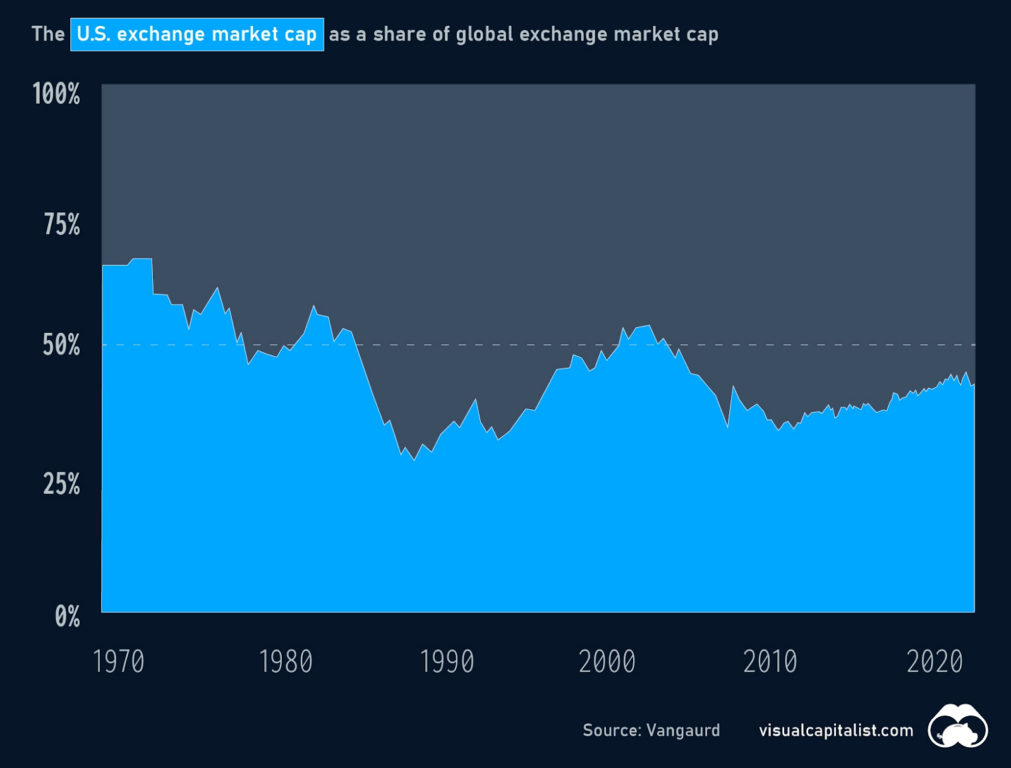Making sense of the markets this week: March 26, 2023
Inflation and banking fears ease (or do they?), GameStop earns a profit, and putting Canadian and U.S. stock exchanges in context.
Advertisement
Inflation and banking fears ease (or do they?), GameStop earns a profit, and putting Canadian and U.S. stock exchanges in context.

Kyle Prevost, editor of Million Dollar Journey and founder of the Canadian Financial Summit, shares financial headlines and offers context for Canadian investors.
Global markets continue to swing up and down based, in large part, on anticipation of the monetary policy going forward.
Consequently, news of the U.S. Federal Reserve 0.25% rate hike—to a band of 4.75% to 5%—was a big deal this week. One bit lost in the shuffle: The fact that the rate pause from the Bank of Canada (BoC) appears to have been the right decision, given the disinflationary momentum that Statistics Canada revealed this week.
StatCan reported that Canada’s February inflation rate was down to 5.2%. That’s lower from 5.9% in January, and 0.2% lower than the consensus forecasted. While high grocery prices continue to draw people’s ire, two key pieces of good news didn’t get as much attention:
Grocery prices are bound to fluctuate, based on large supply-side issues caused by the avian flu and citrus diseases. But there is little the BoC can do about that. For now it appears that rate-sensitive Canadian pricing is on a consistent path back to stability.
Meanwhile, U.S. Fed Chair Jerome Powell continued the inflation fight with the widely anticipated “quarter point” rate hike. He admitted to the inexact nature of monetary policy:
“I do still think, though, that there’s a pathway to [a soft landing]. I think that pathway still exists, and, you know, we’re certainly trying to find it.”
It’s clear Powell sought to reaffirm his commitment to hawkish monetary policy, saying:
“If we need to raise rates, we will […] Of course, we will eventually get a tight enough policy to bring inflation down to 2%.”
Stocks appeared to neutrally react to this news, but expert and commentators weren’t sure how to apportion credit for the downwards momentum to the rate increase versus the news from the world of banking.
As quickly as the “bank run” headlines started, it seems to have quieted down earlier in the week. A couple of mid-sized niche U.S. banks collapsed, and one terribly-managed Swiss bank got “sold off for parts.” But, as far as the average person’s confidence in the overall system went, we were essentially out of the woods.
Or, at least that was the case. Banking fears resurfaced in Europe Friday morning as we were going to press, with both UBS and Deutsche Bank tumbling. We look in depth at the UBS bailout of Credit Suisse below.
Things were already looking questionable on Wednesday, Treasury Secretary Janet Yellen was asked if the U.S. Fed was implicitly going to insure all deposits of any size across the country.
The answer to this question is important. Without a government entity saying all deposits over USD$250,000 are guaranteed (less than USD$250,000 are insured by the Federal Deposit Insurance Corporation (FDIC))—no matter where they are—individuals and businesses with more than a quarter million at a bank could be incentivized to move their money to a bank that’s “too big too fail.”
Secretary Yellen’s response:
“I have not considered or discussed anything having to do with blanket insurance or guarantees of all deposits.”
That’s from the same day (Wednesday) the U.S. Fed’s rate increase came out. So, it’s difficult to tell what the market was reacting strongly to, but several experts believe this unexpected news was actually the bigger negative catalyst. The stock market seemed to act that way: they didn’t tumble initially on Powell’s statement, but then weakened on Yellen’s comments.
These statements came after Yellen stated earlier in the week:
“The steps we took were not focused on aiding specific banks or classes of banks. Our intervention was necessary to protect the broader U.S. banking system. And similar actions could be warranted if smaller institutions suffer deposit runs that pose the risk of contagion.”
In summary: The U.S. government hasn’t considered guarantees of all deposits. But, also—and apparently without consideration—guarantees of deposits of above $250,000 could happen if necessary.
Well, that clarity should ease everyone’s fears. 🙂
It appears that Yellen, and the rest of the U.S. Treasury, are trying to walk a tightrope.
On one hand, they want the loud message to be: “Nothing to see here, no need to take your deposits out, just keep on keepin’ on.”
On the other, they want the quiet message to be: “Hey banks, especially the lightly-regulated ones with under $200 billion in assets, don’t go taking a bunch of risks assuming we’ll provide deposit insurance for everyone. We might not.”
It’s tough to have your monetary cake and eat it too!
The worry expressed by economists is that if banks have to shore up their balance sheets as a result of their government bonds being “marked to market”—effectively admitting they’re not worth as much as they used to be—then they’ll not be able to lend out as much money.
It’s just basic math: If you want banks to have more money on hand, they shouldn’t lend as much out. If that cycle gains too much momentum, it could result in very few people or companies being able to borrow and spend.
Of course, a slowdown in lending might be exactly what Dr. Deflation ordered to cure our nasty bout of inflation.
Not many slow days for economists at the moment.
This week’s bank drama came on the heels of the Credit Suisse saga that we referenced in last week’s “Making sense of the markets this week” column.

To bring you up to date:
While the battle between short sellers and the meme-stock trading apes might have moved off front-page news, the staredown continued this week.
Honestly, the fact that investors are still using options to essentially “bet” more than USD$600 million on whether GameStop (GME/NYSE) shares will go up or down (not invest in the underlying company, just bets on which direction the share price will move) is enough to make a reasonable person question the concept of capitalism and free markets.
The latest battle in the “GameStop meme investors versus short sellers” war occurred on Wednesday after GameStop announced it actually made money for the first time in two years. Sure, overall sales dropped slightly year-over-year, but thanks to all the cuts Gamestop has made, the company made USD$0.16 per share.
To zoom out on the big picture for a second: Investors who bought the stock near the end of the day on Wednesday valued the company at USD$7.27 billion. That’s a lot for a company that lost money last year, and whose big growth vector as of September 2022 was supposed to be FTX crypto gift cards.

At the same time, I can’t believe short sellers are still willing to take the other side of this bet. They’ve seen how disconnected from fundamentals the share price moves continue to be.
In other earnings news this week, shares of Nike (NKE/NYSE) were down nearly 5% on Wednesday, despite a very strong earnings beat. Nike’s earnings per share came in at USD$0.79 (versus USD$0.55 predicted), and revenues were USD$12.39 billion (versus USD$11.47 billion predicted). While key holiday sales were obviously quite strong, investors appeared scared of growing inventories and falling profit margins.
When people refer to “the stock market,” they’re usually talking about several different stock exchanges around the world. Canada’s biggest stock exchange is the Toronto Stock Exchange (TSX), which has approximately 1,500 companies listed and a market cap of about USD$2.7 trillion. While the TSX is by far the biggest in Canada, there are also other exchanges such as the TSX Venture Exchange (formed out of the previous Alberta Stock Exchange, Vancouver Stock Exchange, Winnipeg Stock Exchange, and part of the Montreal Stock Exchange).
Both the Toronto Stock Exchange and the TSX Venture Exchange are owned by TMX Group Inc., which interestingly is a publicly traded company. Other small Canadian stock exchanges include the NEO Stock Exchange, the Canadian Securities Exchange and the NASDAQ Canada Exchange.
Note that even with the large companies in Canada, we still trade back and forth with the Saudi Exchange for 10th spot. The Saudi Exchange is about 80% one company, Saudi Aramco.
When trying to put into perspective the world’s publicly traded companies—and to understand the full scale of just how dominant the U.S.A. is when it comes to financing public companies—you need to see just how massive the lead is on everyone else.
The New York Stock Exchange (pictured at the top) is by far the biggest exchange in the world—about 3.75 times larger than the third place Shanghai Stock Exchange. And, the NASDAQ is nearly three times larger than the Shanghai Exchange. Despite this massive current share of the world’s stock exchanges, the dominance of U.S. stock markets has actually come down a bit from the 1970s.

From a business-owner perspective, you can see why U.S. entrepreneurship thrives and why so many companies still choose to set up shop there.
From a Canadian investor’s view, you see why it’s important to diversify.
American investors might be able to get away with buying a total U.S. stock market index exchange-traded fund (ETF), like Vanguard’s VTI (NYSE Arca), and thinking you’re good to go. That one U.S. domestic ETF represents such a huge part of the world’s overall stock market.
As Canadian investors though, our entire stock exchange is worth just a bit more than the single companies of Apple (APPL/NASDAQ) or Saudi Aramco. So, some Canadian investors may look to diversify using a broader ETF, such as VEQT (VEQT/TSX). We’ve written more about the VEQT ETF on MillionDollarJourney.com.
Kyle Prevost is a financial educator, author and speaker. When he’s not on a basketball court or in a boxing ring trying to recapture his youth, you can find him helping Canadians with their finances over at MillionDollarJourney.com and the Canadian Financial Summit.
Share this article Share on Facebook Share on Twitter Share on Linkedin Share on Reddit Share on Email
I believe “The Big Picture” graphic is wrong.